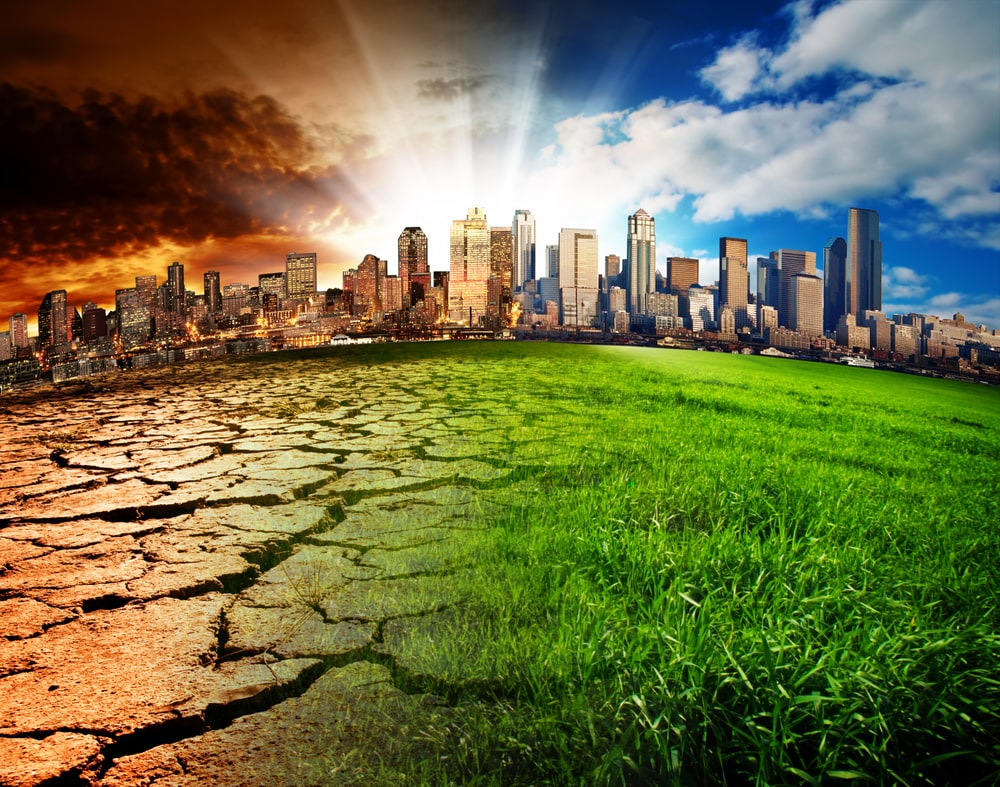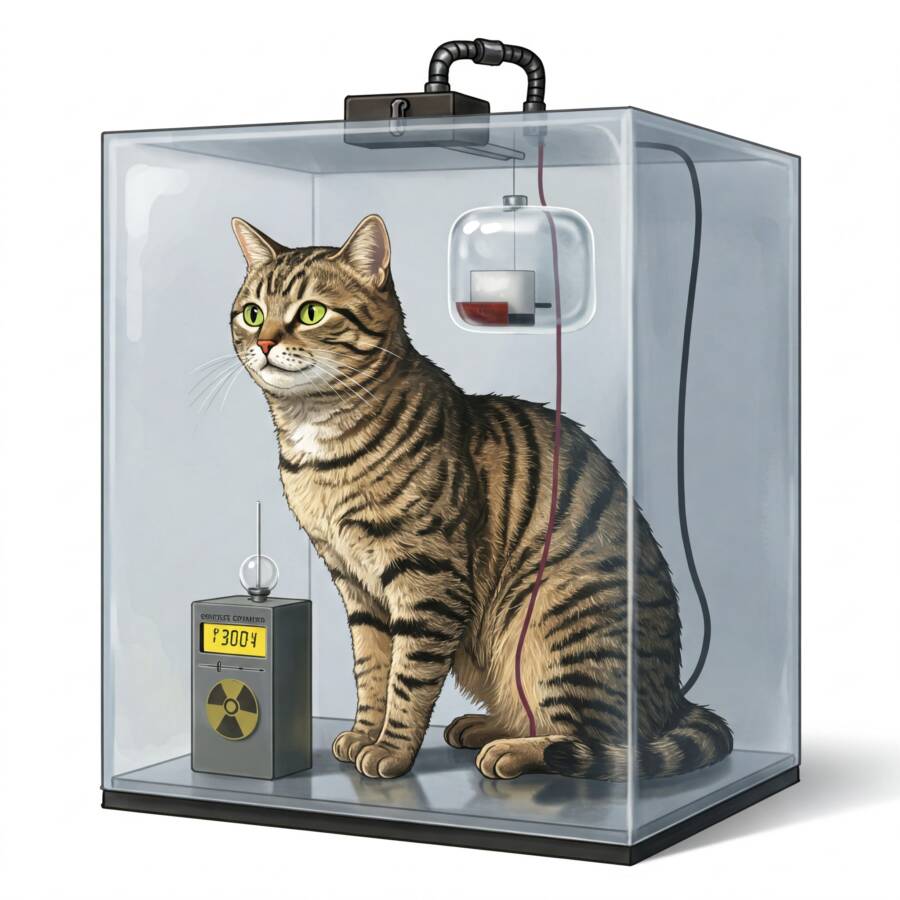Before, the earth was a snowball and a hothouse in many different eras. The natural question would be, if the climate on Earth changed before humans, how are we so sure that we are responsible for the dramatic warming that’s occurring right now?
To a certain degree, it’s because we can clearly point to the causal link between carbon dioxide emissions from human activity and the 1.28-degree Celsius global temperature increase ever since preindustrial times.
Carbon dioxide molecules rapidly absorb infrared radiation, and the more we have in the atmosphere, the more they trap the heat radiating off the planet’s surface.
However, paleoclimatologists also managed to make great strides in understanding the entire process around climate change in the past. Here are a couple of ways in which climate shifts naturally and how each can compare with what’s happening right now.

Solar cycles
Every 11 years, the sun’s magnetic field flips, which drives an 11-year cycle of solar brightening and dimming. However, the variation is quite small and has a rather negligible impact on Earth’s climate.
More significant are “grand solar minima,” which are decades-long periods of reduced solar activity that took place 25 times in the last 11,000 years.
One of the most recent examples is the Maunder minimum, which happened between 1645 and 1715 and marked a solar energy drop by 0.04% to 0.08% below the modern average.
Scientists thought that the Maunder minimum might have been the reason the “Little Ice Age” started, a cool period from the 15th to the 19th centuries.
But soon enough, they figured that it was too small and happened at the wrong time to explain the cooling, which probably had way more to do with volcanic activity.
For the last half-century, the sun has been slightly dimming while the Earth heats up, so global warming can’t really be blamed on the sun.
Volcanic sulfur
In 539 or 540 A.D., the Ilopango volcano in El Salvador exploded so abruptly and violently that its eruption plume reached very high into the stratosphere. Cold summers, drought, famine, and plague ruined societies all over the world.
Eruptions such as Ilopango’s inject the stratosphere with reflective droplets of sulfuric acid that screen sunlight, cooling the entire climate. Sea ice can also increase as a result, reflecting way more sunlight back into space and hence amplifying and prolonging the entire global cooling process.
Ilopango triggered a severe 2-degree Celsius drop that lasted no less than 20 years. More recently, the eruption of Pinatubo in the Philippines in 1991 cooled the entire global climate by 0.6 degrees Celsius for 15 months. Volcanic sulfur in the stratosphere can be quite disruptive, but on a grand scale in the history of Earth, it was quite tiny and temporary.
Short-term climate fluctuations
On top of all the seasonal weather patterns, there’s another series of short-term cycles that affect rainfall and temperature. Probably the most significant one, the El Niño-Southern Oscillation, involved circulation changes in the tropical Pacific Ocean over a time frame of two to seven years that deeply influenced rainfall in North America.
The North Atlantic Oscillation and the Indian Ocean Dipole also created strong regional effects. Both of these interact with the El Niño-Southern Oscillation.
The interconnections between these cycles used to make it quite hard to show that human-caused climate change was definitely more significant and not just another lurch of natural variability.
However, anthropogenic climate change has since gone well beyond natural variability in weather but also seasonal temperatures. The U.S. National Climate Assessment in 2017 decided there’s “no convincing evidence for natural cycles in the observational record that might explain the observed changes in climate.”
Orbital wobbles
Earth’s orbit wobbles as the sun, the moon, and all the other planets change their relative positions. All these cyclical wobbles, also known as Milankovitch cycles, are responsible for the amount of sunlight varying at middle latitudes by up to 25% and causing the climate to oscillate.
All these cycles have operated throughout time, yielding the alternating layers of sediment you might see in cliffs and road cuts. During the Pleistocene epoch, which ended about 11,700 years ago, Milankovitch cycles sent the planet in and out of ice ages.
When Earth’s orbit made northern summers warmer than average, vast ice sheets across North America, Europe, and Asia melted. When the orbit cooled in the northern summers, all those ice sheets grew again.
As warmer oceans dissolved less carbon dioxide, atmospheric carbon dioxide levels rose and fell in concert with these orbital wobbles, amplifying all their effects.
Nowadays, Earth is approaching another minimum of northern sunlight, so with no human carbon dioxide emissions, we might be heading into another ice age within the next 1,500 years.

Faint, young sun
Even if the sun’s brightness fluctuates on shorter timescales, it still brightens overall by 0.009% per million years, and it has brightened by 48% since the birth of the solar system 4.5 billion years ago.
Scientists believe that the faintness of the young sun might have signified that Earth remained frozen solid for the first half of its existence. However, the paradox is that geologists have found 3.4 billion-year-old rocks that formed in wave-agitated waters.
Earth’s unexpectedly warm early climate is probably explained by a certain combination of less land erosion, clearer skies, and shorter days, but also by a peculiar atmospheric composition before Earth had an oxygen-rich atmosphere.
Clement conditions in the second half of Earth’s existence, even with a brightening sun, don’t create a paradox: Earth’s weathering thermostat counteracts the effects of the extra sunlight, stabilizing the Earth’s temperature.
Carbon dioxide and the weathering thermostat
The main control knob for Earth’s climate through time is the level of carbon dioxide in the atmosphere, as carbon dioxide is a long-lasting greenhouse gas that efficiently blocks heat that tries to rise off the planet.
Volcanoes, metamorphic rocks, and the oxidation of carbon in eroded sediments might emit carbon dioxide into the sky, as chemical reactions with silicate minerals actively remove carbon dioxide and bury it as limestone.
The balance between all these processes works as a thermostat, and when the climate warms, chemical reactions are more efficient at removing carbon dioxide.
This puts a brake on warming. When the climate cools off, reactions become less efficient, easing the cooling. At the same time, over a long period of time, Earth’s climate has remained relatively stable, providing a habitable environment. Moreover, average carbon dioxide levels declined as a response to solar brightening.
Plate tectonics
The rearrangement of land masses on Earth’s crust can definitely shift the weathering thermostat to a whole new setting. The planet has been cooling overall for the last 50 million years or so as plate tectonic collisions thrust up chemically reactive rocks, such as basalt or volcanic ash, in the warm, wet tropics, which also increases the rate of reactions that draw carbon dioxide from the sky.
Besides, over the last 20 million years, the building of the Himalayas, Andes, Alps, and many other mountains has definitely doubled erosion rates, which boosted weathering.
Another big contributor to the cooling trend was the drifting apart of South America and Tasmania from Antarctica 35.7 million years ago, which started a brand new ocean current around Antarctica.
This also invigorated ocean circulation and carbon dioxide, consuming most plankton. Antarctica’s ice sheets grew increasingly bigger. Do you want to know more about climate change? Here’s a great series that you should definitely give a try: “The Age of Consequences“.
If you found this article interesting, then you also need to read: These 7 Frightening Things Might Actually End the World, Scientists Say















2 Responses
Absolutely interesting and factual. Thank you for sharing
We should be dead already Liberals said year’s ago that the Earth would be destroyed.